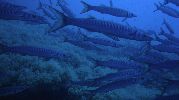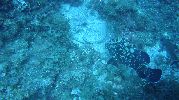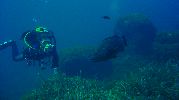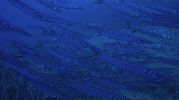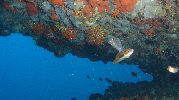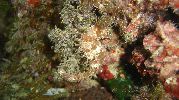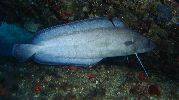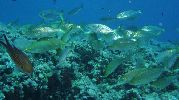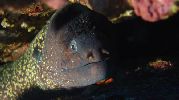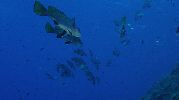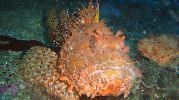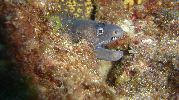Guide of the best beaches and coves in Majorca, Ibiza and Formentera
THE BEST BEACHES IN MAJORCA
Underwater diving in Majorca and Pityuses
Underwater diving in Majorca is a very practised activity, both by the residents on the island, and by the tourists visiting it. It presents a great variety of possibilities such as apnea, for the uninitiated, and the most experienced divers.
We find immersions for all levels, both from the shore, and boarded from the many diving centres distributed throughout the coast. At these centres they are also supplied with all the necessary equipment to rent and they admit all kind of degrees from the different organizations.
The waters around the archipelago highlight for their good visibility and the temperature ranges from 12º-14º C in winter to 28º-30º C in summer, so underwater diving can be practised all year round.
There are different underwater diving areas, each one with its own peculiarities:
TRAMUNTANA It is perhaps the most extensive, from Cap de Formentor, in the north, to Sant Elm, in the southwest. The rocky formations of virtually the entire coast also print a special appearance under the water. The fauna is the typical of the Mediterranean and in the months of July-September it would be a good idea to have a look at the 'blue' because there can be sighted some pelagic especies. The most outstanding spots are 'Cap de Formentor', 'Cap de Catalunya', 'Port de Sóller' and 'Sant Elm'.
SA DRAGONERA ISLAND This island is separated from Sant Elm by a channel about 2 km long. Underwater diving in the entire outer coast is excellent due to the clarity of its waters and the variety of levels of depth where the light creates amazing environmets, especially in Cap de Tramuntana and 'Cap de Llebeig'
BAY OF PALMA In the bay of Palma, which extends from 'Cap de Cala Figuera' to 'Cap Salines' some highly recommended dive sites can be found. In 'isla del Sec' (Sec island) we find several wrecks (shipwrecks) quite damaged by the passage of time. In the whole area there are more wrecks, over all fishing and pleasure boats, some of them at levels reserved for experienced divers, although there are more accessible ones, as in the case of the so-called 'dike wrecks' located a few metres from the west dike in the port of Palma. They are two vessels about 65 metres long that were sunk on purpose to avoid trawling the fishing boats near the coast and that have become an oasis of life in the area.
EAST On the coast of Manacor, in the area of Cala Varques towards Cala Falcó, there are some underwater caves that we only recommend to experienced divers, as it is a dangerous area.
NORTH-EAST This area stretches from 'cala Ratjada' to the bay of Alcudia and it is known for the profusion of caves, some of these only accessible for experienced caving divers. The bay of Pollença is practicable in its entirety, being the most interesting area the one adjoining 'cap de Formentor'
NATURE RESERVES The establishment of nature reserves in the Majorcan coastline in recent years has generated a remarkable recovery of the seabed and especially of territorial species as groupers, moray eels, congers or forkbeards which can be observed in large numbers in these areas making of them a required destination for photosub lovers. At early morning hours and at dusk we can observe large shoels of Mediterranean baracudas and other open sea species like toothed breams or breams which approch the coast for feeding.
Majorca definitely provides an incomparable framework for the practice of this sport that gains adherents every day.
In Pityuses the water is even clearer than in the Majorcan coast due to the posidonia surrounding them. In clear days there is a visibilty of 50 metres. The water temperature ranges as in the Majorcan coast, between 15 °C in winter to 30 °C in the hottest days, so underwater diving can be practised all year round.
The island of Formentera can be anchored all along its coast, being the most impressive the northern area just the area of special protection. Caves can be seen, as well as walls with gorgonians, wrecks, and they can even also be done swallow dives to see incredible landscapes of posidonia meadows considered the best preserved in the Mediterranean.
On the coast of Ibiza the islets surrounding it call the attention. Lots of life can be seen as groupers, haddocks, baracudas, giant toothed breams, breams, moray eels, octopuses, corvinas, etc. There are also sunk wrecks full of life in several places along the coast, incredible caves, an underwater canyon can be visited or an old fish farm.
From disfrutalaplaya (enjoythebeach) we recommend hiring professional services as there are dangerous areas, like caves, and these are professionals who: know exactly where to anchor, organize trips at all levels both day and night, have the necessary material and tutor those who have never tried this wonderful world of underwater diving, being these really amazing lessons.

